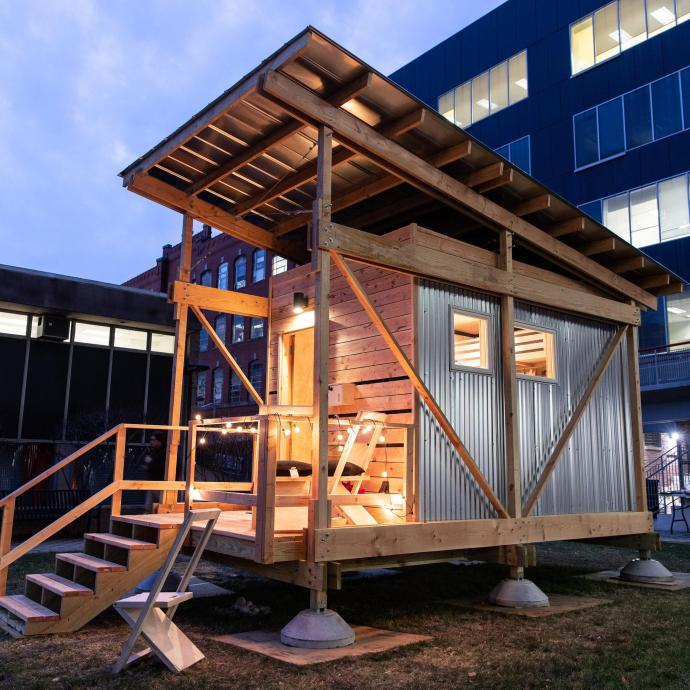University Lecturer in the Department of Biology Dr. Caroline DeVan, Senior University Lecturer in Biological Sciences Dr. Maria Stanko, Associate Professor in the Department of Biological Sciences Dr. Gareth Russell, and Associate Professor in the Department of Biological Sciences Dr. Daniel Bunker are co-directors of NJIT’s Urban Ecology Lab. This year, they held the second annual BioBlitz on NJIT’s campus. Each year since 2011 — bar 2020 — Rutgers-Newark and NJIT held a BioBlitz to get to know wildlife in an urban area.
“BioBlitzes are a mixture of science and public outreach. The science part is a rapid survey of species, often carried out with the help of ‘citizen scientists’, and the outreach is to raise awareness of the often-surprising diversity of species in our neighborhoods,” Russell said.
DeVan added, “They are a type of community science — a way to engage people in the local community with the biodiversity that is all around them while collecting important data on what biodiversity is present.”
“We are so used to cities as places for humans only that this will surprise us,” Associate Professor for Rutgers-Newark Dr. Claus Holzapfel said. “Getting to know critters and plants is fun and healthy for us and will make us care for them a bit more. We all win!”
This year, there were tables set up in front of Central King Building with the lab’s co-directors as hosts on Sept. 21 and 22. There were over 230 participants, and they discovered a total of around 275 different species, meaning that on average, everyone found at least one kind of plant or animal that no one else found, according to Russell.
DeVan said her favorite part was meeting all the NJIT students who came by the table and asked questions or shared their observations. “I had people taking a ‘quiz’ to see if they could distinguish bees from other insects, and it was fun to see what people knew and hear about their own experiences with nature on campus,” she said.
A black and white warbler perched on the trunk of a tree right behind the tables at one point. “This was a super exciting species to see because these migratory warblers breed in northeastern forests and are not commonly seen on our campus except during migration. This is evidence that our campus can represent an island of hospitable habitat in an urban area for migrating species and highlights the importance of advocating for increasing biodiversity on campus,” Stanko commented.
The Albert Dorman Honors College instituted an environmental focus for their first-year students, not just in understanding and appreciation, but in practical service. The outcome of this is a series of campus landscaping projects to create wildlife-friendly plantings using native species, which can be found behind the Honors Hall, in front of Eberhardt Hall, and on the Campus Center Roof Terrace.
“The Honors students hold a design competition for each planting, and starting this year, the Urban Ecology Lab has been helping by outlining the goal and helping to judge the entries,” Russell said. “The idea is that these plantings will be more than just pleasing to look at and attractive to wildlife; they will also be the focus of long-term research, helping our campus become a ‘living lab’ for urban ecology.”
DeVan mentioned that the resident hawk nest and the webcam was another highlight of the past year regarding working with the Honors College.
“It was great to see how many students from degrees outside of biology and environmental science were interested in nature. I had many conversations with budding engineers and computer scientists, and I made sure to point out the many ways in which those disciplines can contribute to solving environmental and ecological challenges,” Russell commented. “What you might call ’technology for nature’ is a growing enterprise.”
Overall, Bunker called the event a huge success, and DeVan encourages people to also explore the nature they find wherever they are — “the more you look, the more you see!”
Scan the QR code to look at all the observations from this year’s BioBlitz.




























